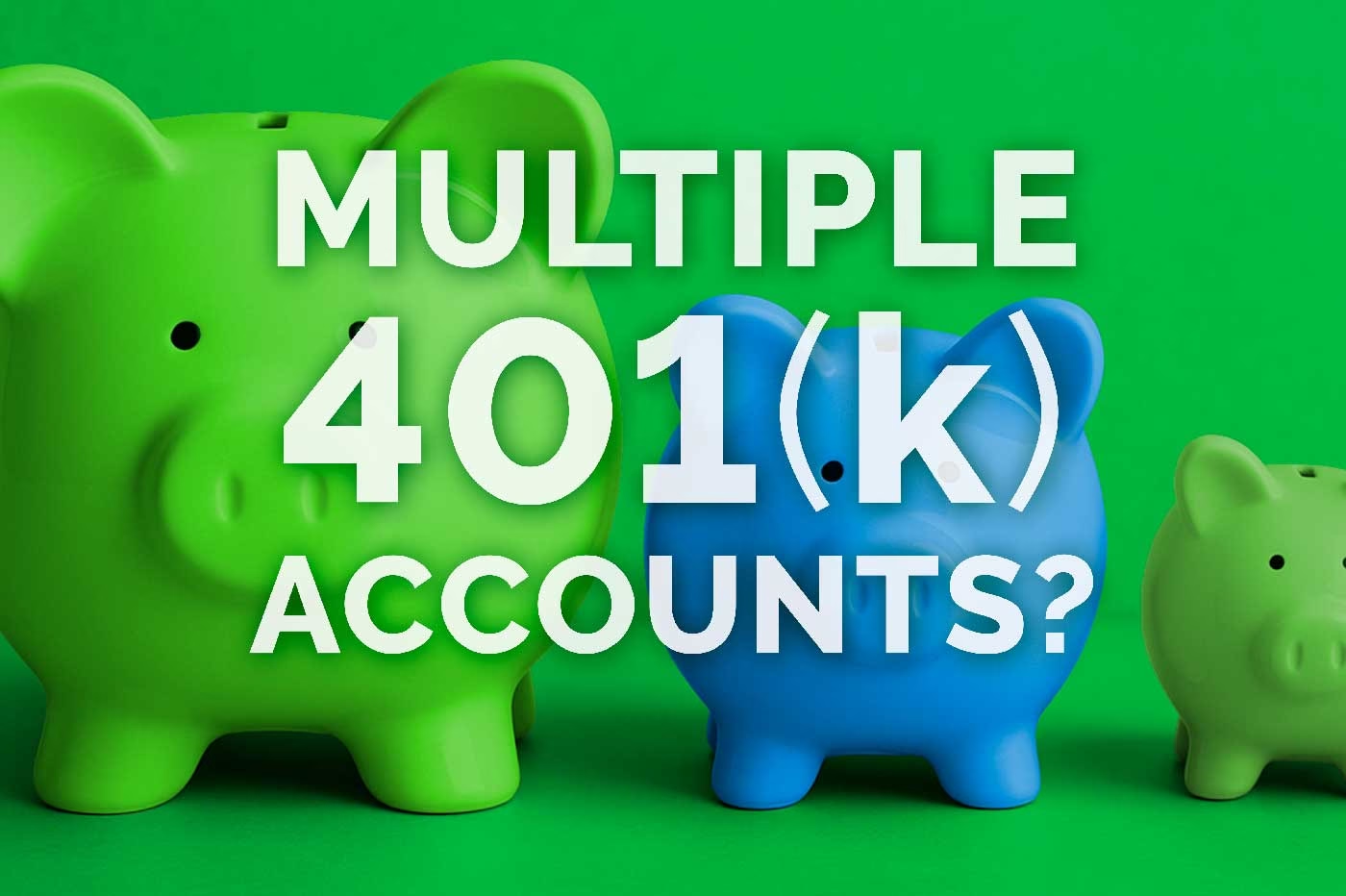It’s a common question: Can I have more than one 401(k)? With people changing jobs more frequently and side hustles on the rise, the question comes up often—and the answer is yes.
But before you celebrate the idea of stacking 401(k) accounts, there are some IRS rules and strategic considerations to understand. Having multiple 401(k)s can work in your favor, but it can also create headaches if managed poorly. Let’s break it down.
Table of Contents
Can You Have Two 401(k)s? The Short Answer
Yes, you can have more than one 401(k) account—if you have multiple employers that offer plans. Here are some common scenarios:
- Job Change: You left your old job and have a 401(k) there, and your new employer offers a 401(k) too.
- Side Business: You have a full-time job with a 401(k) and a side gig where you’ve set up a solo 401(k).
- Multiple Employers: Some people work for two employers at the same time, each offering a plan.
- Strategic Reasons: Some people keep older plans for specific investment options or features like loan availability.
So, owning two or more 401(k)s is perfectly legal. But there’s a big caveat: the IRS contribution limits apply to you as an individual, not to each account.
IRS Rules You Need to Know
Here’s where people get tripped up: having multiple 401(k)s doesn’t mean you can double your annual contribution.
- Employee Contribution Limit: For 2025, you can contribute $23,500 in total across all 401(k) accounts if you’re under age 50.
- Catch-Up Contributions: If you’re 50 or older, you can contribute an additional $7,500, bringing your total to $31,000.
- Enhanced Catch-Up for Ages 60–63: A new provision allows an extra $11,250, for a possible total of $34,750—if your plan allows it.
- Employer Match: Each employer can contribute its own match. That means you could benefit from multiple employer matches if you have more than one plan.
- Overall Limit: Across all plans combined, the total contribution limit (employee + employer) is $69,000 in 2025 (or more with catch-up contributions).
The Bottom line: You can split your contributions between accounts any way you like—but don’t exceed these limits, or you could face tax penalties.
Pros and Cons of Multiple 401(k)s
Like most financial decisions, there are trade-offs.
Pros
- More Employer Matches: If you work for multiple employers, you can take advantage of more than one company match.
- Investment Flexibility: Different plans may offer different investment options.
- Loan Access: Some plans allow loans, so multiple accounts could provide flexibility in an emergency.
Cons
- Increased Complexity: Managing multiple accounts means more paperwork, more statements, and more tracking, which can become cumbersome over time.
- Higher Fees: Each 401(k) account typically incurs administrative and investment fees, so multiple accounts can mean paying these costs several times, unnecessarily eating into your savings.
- Investment Strategy Challenges: Maintaining a coherent investment strategy is harder when funds are spread across different plans with varying options and allocations. For example, achieving proper portfolio diversification can become tricky when your assets are scattered across accounts with limited or differing investment choices.
- RMD Coordination Issues: As you near retirement, coordinating Required Minimum Distributions (RMDs) across multiple accounts adds complexity and the risk of costly mistakes.
- Forgotten Accounts and Penalties: Old accounts can be forgotten, leading to missed opportunities or even forced cash-outs or escheatment to the state. (escheatment means the funds are turned over to the state when accounts are considered abandoned)
- Beneficiary Complications: Multiple accounts can create difficulties for your beneficiaries, making it harder for them to locate and claim your funds.
- Lost Accounts: People sometimes lose track of old accounts, especially after multiple job changes.
Should You Consolidate Old 401(k)s?
If you’ve changed jobs several times, you may have a “trail” of old 401(k)s. Consolidating them can make your financial life easier. Generally speaking, this is best path forward, and the one we at Addis Hill recommend most.
Your options:
- Roll them into your current employer’s plan (if allowed).
- Roll them into an IRA for more investment choices.
Why consolidate? It simplifies account management, makes it easier to track contributions, maintain diversification, and may reduce fees.
When might you not consolidate? If your old plan offers unique benefits—such as access to institutional funds or lower fees—you might consider keeping it.

Strategies for Managing Multiple 401(k)s
If you choose to keep multiple accounts, I first and foremost recommend hiring a professional financial advisor or planner (make sure they are a fiduciary!). If you do choose to manage your own make sure to follow these guidelines:
- Track your combined contributions to avoid exceeding IRS limits.
- Maintain a list of all accounts, providers, and login credentials.
- Revisit asset allocation regularly across all accounts to ensure your overall portfolio is balanced.
Why Professional Help Matters
(And What Can Go Wrong Without It)
Managing multiple 401(k)s can seem simple—until it’s not. Here are a few costly mistakes to avoid:
- Exceeding Contribution Limits: If you contribute more than the $23,500 limit (or $31,000 if 50+, or $34,750 for ages 60–63), you’ll face tax penalties and extra paperwork.
- Missing RMDs: At age 73, Required Minimum Distributions apply. Multiple accounts mean more complexity—and missing one can trigger big penalties.
- Rollovers Gone Wrong: A poorly executed rollover could cause double taxation or early withdrawal penalties.
- Missing Employer Matches: Without a plan, you might spread contributions in a way that leaves free money on the table.
The Professional Solution:
A financial advisor can coordinate contributions to keep you compliant. In addition, they can help consolidate old accounts strategically so you’re not juggling multiple plans unnecessarily. They can also optimize tax benefits and investment options, ensuring you take full advantage of available opportunities. Finally, they’ll work with you to create a unified retirement strategy tailored to your goals, making your financial journey smoother and more efficient.
Final Thoughts: More 401(k) accounts, More Problems?
So today we’ve learned that yes, you can have two (or more) 401(k) accounts. In fact, it’s common. But before you start juggling multiple plans, know the rules, watch the limits, and consider consolidating when it makes sense.
The key takeaway? Multiple accounts can sometimes be an advantage —or a hassle. The difference lies in the potential opportunities presented by having multiple 401(k) accounts and how well you manage them.
Need help deciding whether to consolidate or keep multiple 401(k)s? Let’s talk.
➤ Schedule a consultation
➤ Email me directly: chip@addishill.com


